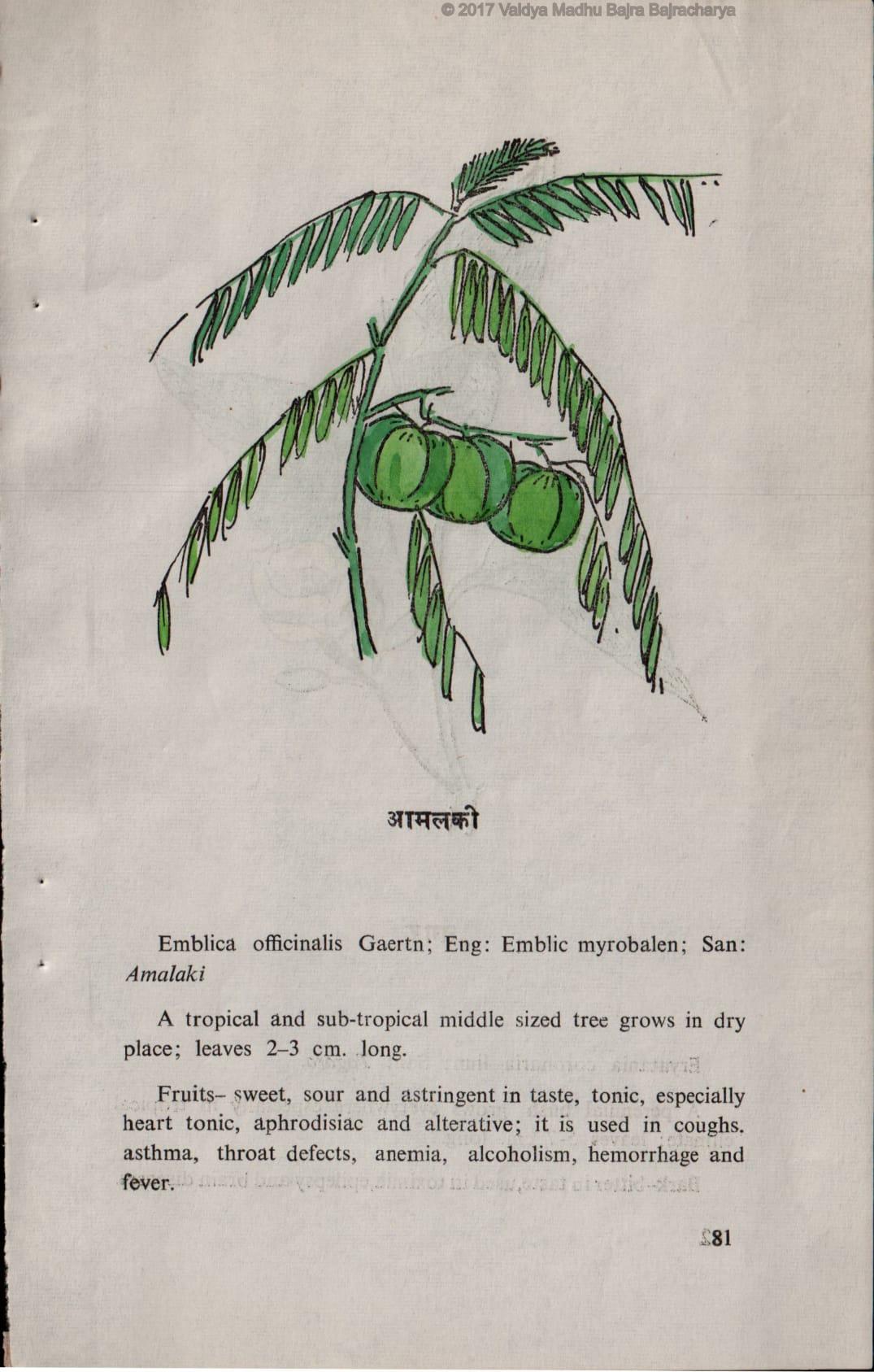Latin: Emblica officinalis
Sanskrit: Amalaki
English: Indian gooseberry
WHAT IT DOES: Amla fruit is sour, sweet and astringent in taste, and cooling in action. It is a rasayana tonic that promotes longevity, and is especially good for the heart. It strengthen the lungs, helping to fight chronic lung problems as well as upper respiratory infections.
RATING: Gold
SAFETY ISSUES: None known
STARTING DOSAGE:
• Dried powder: two grams two times per day
• 4:1 Concentrated powder extract: one gram two times per day

Amla fruit comes from Emblica officinalis, a tropical and sub-tropical medium sized tree that grows in arid areas. It is very highly regarded for traditional use as a heart tonic and as a rasayana for long life. Its tonic qualities are very strong, lending it medicinal value in the treatment of numerous diseases, including fever, cough, asthma, anemia, hemorrhage, and alcoholism. Amla is one of three ingredients in the famous Ayurvedic balancing tonic formula called triphala (three-fruit compound). It also comprises about 80% of the famous medicine called Chyvanaprasha, an ancient tonic still used all over India made in the form of a jam that improves mental and physical well-being in people of all ages.
Modern research shows amla to contain an extremely high concentration of bioflavonoids and antioxidants, and this may partially account for its reputation. Ferreting out the exact constituents responsible has been an ongoing enterprise. with gallic acid esters now apparently in the lead over earlier claims of Vitamin C or tannins. TAM doctors called this herb ” tridosaghna,” meaning “an agent that stimulates the brain to subdue over-balance in the three controlling systems called Vata, Pitta and Kapha.” At our clinic we often add amla fruit to formulas when a gentle cleansing action is needed, especially in sensitive and weakened patients.
Research highlights
• Tannin compounds found in amla fruit were tested for their effects in the brains of rats on three important free radical scavenging enzymes. Levels of all three increased, and there was a parallel decrease of oxidative stress (Bhattacharya et al. 1999). This illustrates that the antioxidant activity of amla is due to more than its high vitamin C content, a common misconception.
• Daily administration of a water extract of amla fruit protected laboratory mice from arsenic damage (Biswas et al., 1999), while another study confirmed that amla fruit strengthened bodily defense mechanisms against stress-induced free radical damage. The researchers reported that the amla appeared to cause an increase in the ability of target tissues to synthesize prostaglandins, which are essential to a host of important regulatory health functions (Rege et al., 1999).
• Amla may also possess cancer-fighting properties, as illustrated by several studies. Extracts of three Ayurvedic herbs, amla fruit, tamalaki (Phyllanthus amarus) and katuki rhizome (Picrorrhiza kurroa) significantly inhibited the ability of carcinogenic chemicals to induce liver cancer. Without the herbs, the incidence of tumors was 100% (Jeena et al., 1999).
• In another study, a group of mice that received dietary supplementation of amla fruit along with a known carcinogen experienced a significant reduction in cell poisoning when compared to mice that received only the carcinogen (Nandi et al., 1997).
• Studies have also indicated an ability to protect against elevated cholesterol levels and the resultant arterial damage. Fresh juice of amla fruit reduced the atherosclerotic effects of a high-fat, high-cholesterol diet in rabbits, as illustrates by the regression of aortic plaques (Mathur et al., 1996). An earlier human study also showed a decrease in cholesterol with amla. However, two weeks after discontinuing amla fruit, cholesterol levels rose again (Jacob et al., 1988). Also, all three fruits in triphala were shown to lower cholesterol significantly, although vibhitaki fruit (Terminalia belerica) proved slightly stronger than amla (Thakur et al., 1988).
